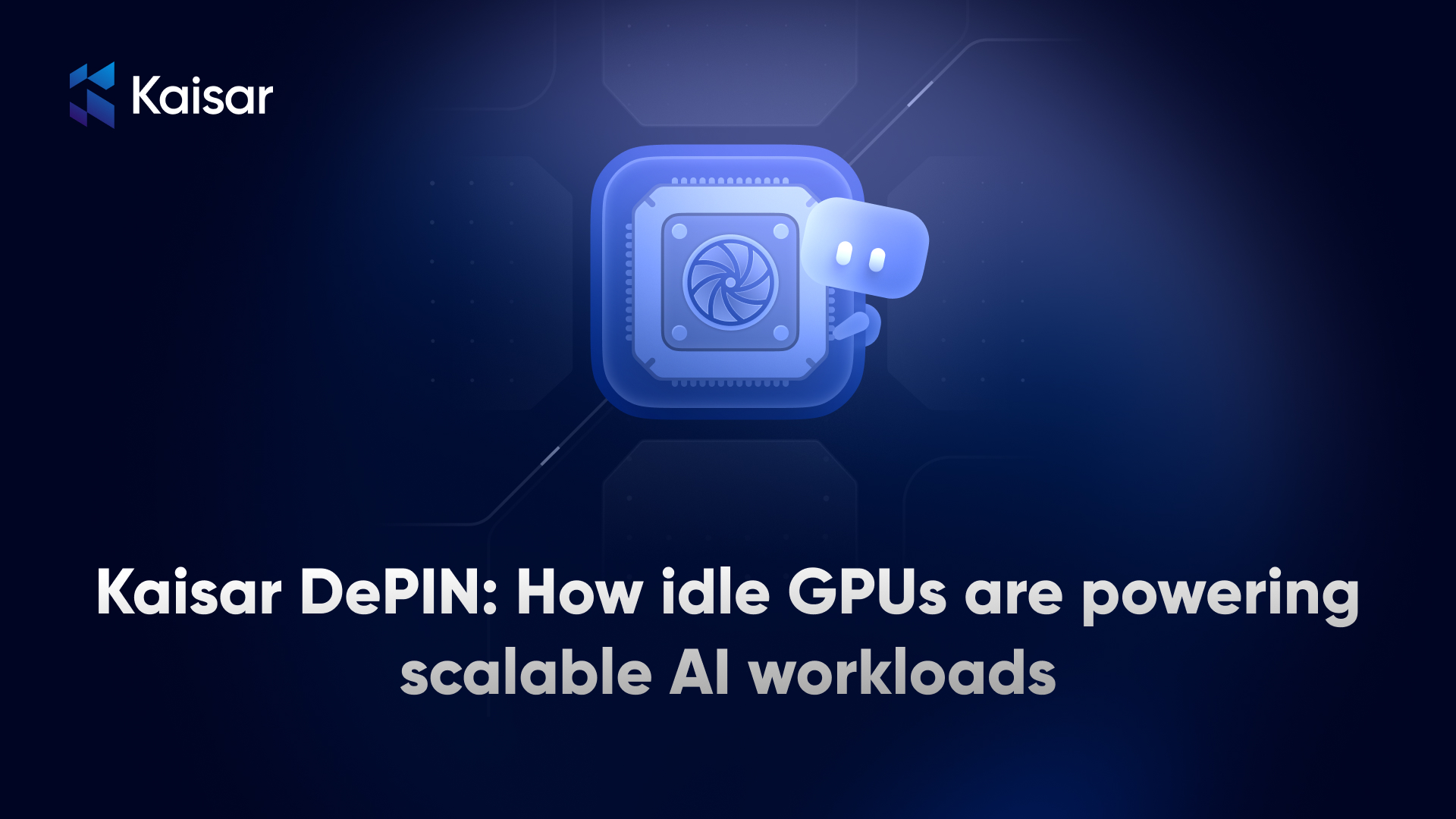In a time where artificial intelligence (AI) is pioneering change across industries with high performance computing. GPUs have become an absolute necessity. For enterprises and developers looking for dependable GPU compute, there exist countless machines sitting idle around the globe with untapped powerful GPUs.
Kaisar brings these idle GPUs to work by providing a decentralized way to democratize GPU access and monetize underutilized compute. In this article we will expand on how Kaisar is transforming the way AI workloads connect to compute resources around the globe.
Kaisar’s Vision: Decentralized GPU Compute for AI
Current cloud infrastructure is centralized and nominally expensive for many independent developers or small AI companies. Kaisar offers a new paradigm: a decentralized network where providers of GPU compute can share unused compute resources with end-users that can access it efficiently and effectively.
Kaisar is leveraging a decentralized model and use of blockchain consensus to incentivize providers and checkers while providing system integrity, performance accountability, and long-term sustainability.
How Kaisar Works: Matching Idle GPUs with AI Workloads
Kaisar leverages four essential components: Kaisar Cloud (End-Users), Providers, PEAQ blockchain and Kaisar Checkers to work seamlessly as a GPU DePIN.
Kaisar Cloud: The User Portal to GPU resources
The foundation of the Kaisar ecosystem is Kaisar Cloud, the interface through which end- users (data scientists, researchers, startups, or enterprises) access the network. Kaisar Cloud abstracts away the complexities of the blockchain and directly allows users to rent GPU compute resources in real-time.
Initially, users advance an order for the GPU resources. The transaction platform is a connected with crypto wallet. Once order is confirmed, the end-user is matched to a provider’s compute environment that is available.
The network connects the user to a particular container or cluster automatically and the process is asynchronous. The time saved with Kaisar is tremendous, especially to AI teams that want elastic scalability.
Providers: Turning Idle Machines Into Revenue
On the supply-side of Kaisar’s ecosystem are the providers — which could be individuals or businesses or organizations that contribute GPU-enabled hardware installed in the network.
Anyone with GPU-enabled devices—ranging from gaming PCs to data center racks—can earn by joining Kaisar’s provider network.
Steps to Become a Kaisar GPU Provider:
- Register GPU devices via the Kaisar dashboard
- Connect a crypto wallet and pay a small one-time anti-spam registration fee.
- Set preferences (availability, workload type, usage limits)
- Start earning as compute jobs are automatically assigned to your hardware from Kaisar Cloud users.
PEAQ Blockchain
The underlying foundation for Kaisar’s model of decentralized service is the PEAQ blockchain. PEAQ has been developed specifically to handle DePIN (Decentralized Physical Infrastructure Networks). PEAQ is a high-throughput layer-one blockchain that is designed for over 100,000 transactions per second (TPS).
The Kaisar Cloud records and reports every end user session to the PEAQ Blockchain, which keeps immutable records of resource consumption. If there are any discrepancies of performance to user, users can seek refunds.
Providers are rewarded using a mechanism that is blockchain based. As the providers execute workloads, the usage is reported back to the PEAQ blockchain.The rewards are calculated by using information about the workload in terms of how it was executed on a machine showing performance and capacity, uptime, and reliability.
Kaisar Checkers: A Quality Assurance Mechanism
To maintain trust, and to allow Kaisar to maintain a level of performance quality assurance, Kaisar has implemented a new quality assurance mechanism—the Kaisar Checkers.
The Kaisar Checkers are independent nodes in the ecosystem which will routinely send performance evaluation tasks to your registered machines to ensure they are actually functioning, and thier response time is accurate in real-time.
Checkers will perform real workloads on system for quality assurance. After every check, the result will be reported to the PEAQ Blockchain with Proof of Physical Work (PoPW)— cryptographic proof that the physical compute was done as reported.
Conclusion
With the recent shortage of GPUs for AI industrial and specific rising costs of computation, Kaisar represents an important new opportunity for the AI industry allowing smaller players to gain access to affordable high-performance compute, while at the same time allowing individuals or institutions to recover passively earned income from machines that they are not fully utilizing.
Kaisar is not simply a decentralized compute marketplace; it’s a move towards democratizing AI development and enabling the use of idled resources around the world to solve high-impact tasks.
Kaisar is designed to be a balanced, self-sustaining ecosystem. As the demand for AI compute power continues to grow, Kaisar’s decentralized model could serve as a foundation for the next generation of cloud infrastructures.
Join Kaisar Network
Ready to scale your AI projects with affordable GPU resources? Join Kaisar Network today and harness the power of DePIN. Visit kaisar.io to get started.

